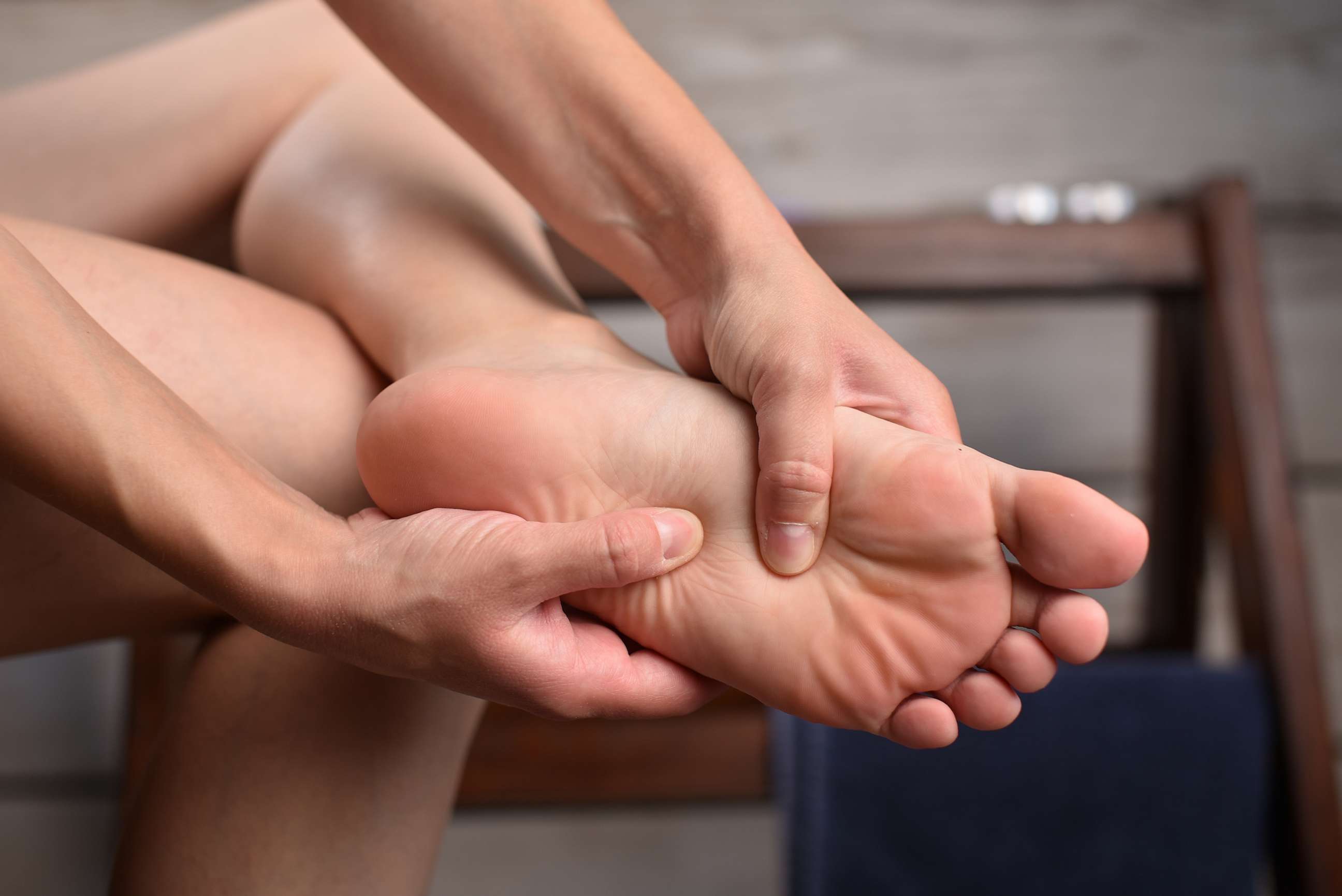Flip-flops can increase injuries. Here’s how to prevent summer foot pain
Plantar fasciitis is one of the most common foot injuries.
With summer on the horizon, many are breaking out their flip-flops and summer shoes. But these popular options can lead to more injuries and foot pain in the warmer months, including plantar fasciitis, one of the most common foot injuries, according to The Washington Post.
What is plantar fasciitis?
Plantar fasciitis is a very common condition that affects approximately 2 million people each year, according to the American Academy of Orthopaedic Surgeons.
When the plantar fascia, a ligament at the bottom of the foot, is overused, it can cause inflammation, pain, micro tears and tight muscles, impacting how one walks or runs. Plantar fasciitis can also cause, in some cases, a heel spur, a type of bony growth by the heel, according to the National Library of Medicine.

What do flip-flops and summer shoes have to do with plantar fasciitis?
Because flip-flops and summer shoes tend to have less cushion, they can be less supportive than other types of shoes, like sneakers. The lack of cushion and support can lead to more stress and tension on the feet and muscles in the area.
How do you prevent plantar fasciitis?
The best way to prevent plantar fasciitis, according to the American Academy of Orthopaedic Surgeons, is to wear cushioned shoes with arch support. Tension-reducing inserts, such as soft silicone heel pads, may help too. Avoid shoes without arch support or those that are already worn out, like overused running shoes, which should be replaced on a regular basis.
When starting a new exercise routine, start slowly and do daily stretches at the beginning of the day or before or after a workout to keep muscles loose.
To stretch the plantar fascia, place feet flat on the ground and then raise the toes and then the arches of the feet. This can help lengthen the ligament and encourage any healing needed.
What can I do if I already have plantar fasciitis?
To address immediate pain, following the RICE method, which stands for "Rest, Ice, Compress, Elevate," can help. Easy hacks include rolling a tennis ball or a frozen water bottle along the balls of the feet to relieve pain.
Over-the-counter pain relief medication may also be helpful as well as calf stretches and plantar fascia stretches. A night splint could also be used to stretch muscles while sleeping.
Most plantar fasciitis symptoms tend of resolved within a year but other long-term treatment options may include a surgical procedure that lengthens the calf muscle and/or a cut to the plantar fascia to reduce tension, according to the American Academy of Orthopaedic Surgeons. Anyone with foot pain that doesn't go away should speak to a health care provider about their options.






